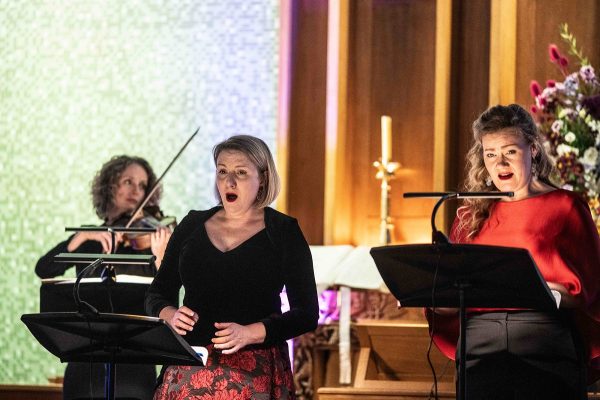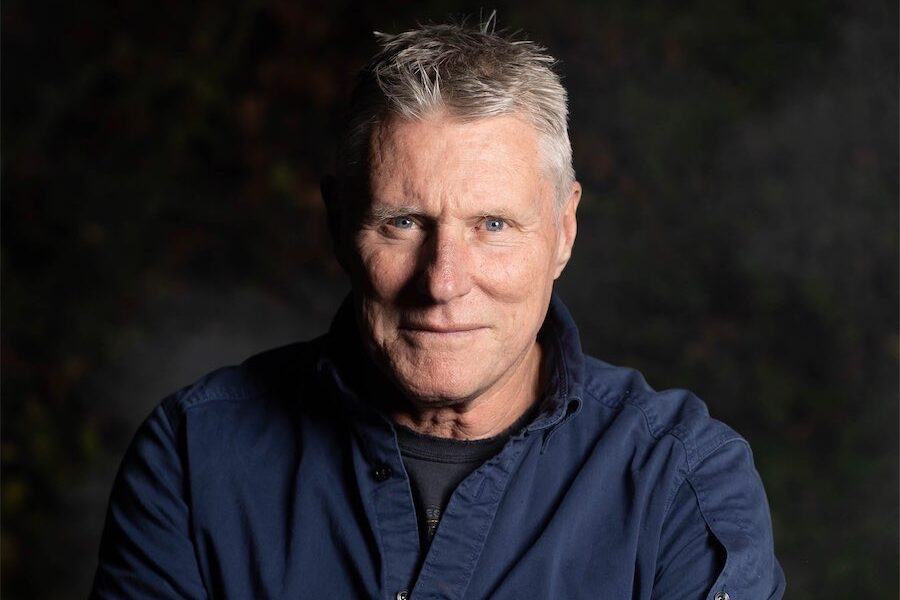
Music / Heavenly Sopranos – Jewels of the Baroque, Australian Haydn Ensemble. At Wesley Music Centre, April 11. Reviewed by ALPHA GREGORY.
Seven fabulous musicians and two masterful soloists took us to the heights of passion and the depths of grief in a concert in Wesley Music Centre on Thursday.
A packed house was privileged to experience music of the highest calibre.
The Australian Haydn Ensemble is celebrating its 12th year. Founded and directed by Skye McIntosh, it was a treat to hear and see instruments made in the 1700s being used for such a high purpose.
Also known as the chitarone, the theorbo was played at this fabulous concert by Simon Martyn-Ellis. It is a member of the lute family, created about 400 years ago to accompany the human voice in a new style of music: “opera”. Building on the capacities of a lute, the theorbo provided a louder, deeper bass range.

The ensemble were magnificent. They have obviously created, over their 12 years, a close-knit mentality and they breathed and phrased as one, fitting together like an Italian leather glove on a hand. Driving rhythms, runs beautifully executed, perfect unisons and a lovely continuo to keep the beautiful melodies moving forward – delicious! They were wonderfully supportive of the soloists but had an energy, colour, intensity and virtuosity of their own that had the audience mesmerised.
It was the vocal soloists, however, who stole the show. The first duet in Adolf Hasse’s Oratorio, Sanctus Petrus et Sancta Maria, was indicative of what was to come. The two sopranos, Celeste Lazarenko and Helen Sherman, had a lovely blended sound, beautifully crafted dynamics and a depth of feeling for their lyrics.
Helen Sherman, mezzo-soprano, had the ability to make us tremble and quake and then to weep in despair. Her first solo in the Hesse Oratorio was bright, full of vigour, fire and drama.
One of the many highlights of the evening was the rendition of Hasse’s aria from the motet Alta nubes illustrata by soprano Celeste Lazarenko. “Illuminated by the golden glow of the sun, the cloud on high radiates in splendour”. And radiate she did, light as a feather on her top notes, perfect intonation on all the very fast runs.
The program included two movements from Francesco Durante’s Concerto No. 1 in F minor. The first and fifth movements of his Concerto No 1 in F minor, Un Poco Andante and Allegro, sat nicely in this program of sacred music of the Baroque period and enabled the audience to focus solely on the instruments, perhaps not so mellow as current day strings, but their unique sound and tonal quality was what the composers had in mind when writing these pieces.
Pergolesi’s Stabat Mater is a highlight on any program. Stabat Mater is a 13th Century Christian hymn that details Mary’s emotions as she watches her son dying on the cross.
The ascending dissonances and suspensions that open this piece set the mood for the drama that unfolds. When the two voices enter, these dissonances are used again and they create the most wonderful tension. The weaving vocal and instrumental textures are rich and it is impossible to listen to this music without a stirring of the soul.
The Stabat Mater is sublimely beautiful and was most excellently rendered by the Australian Haydn Ensemble and soloists. It was marvellous to hear the music played on baroque instruments of the period.
The evening of music devoted to and sacred themes, grief, suffering and maternal love was radiant in performance.
Who can be trusted?
In a world of spin and confusion, there’s never been a more important time to support independent journalism in Canberra.
If you trust our work online and want to enforce the power of independent voices, I invite you to make a small contribution.
Every dollar of support is invested back into our journalism to help keep citynews.com.au strong and free.
Thank you,
Ian Meikle, editor








Leave a Reply